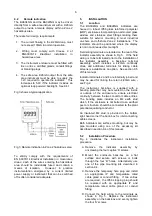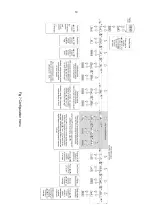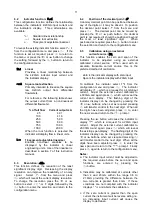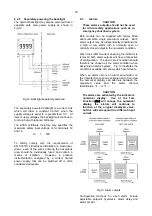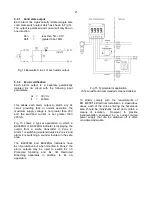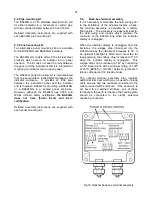
20
9.2.2
Separately powering the backlight
The optional backlight may also be powered from a
separate safe area power supply as shown in
Fig 12.
Fig 12 Backlight separately powered
The separately powered backlight is a current sink
which will draw a constant 34.7mA when the
supply voltage is equal to or greater than 11V. At
lower supply voltages the backlight will continue to
function but with reduced brilliance.
The ATEX certificate therefore only specifies the
maximum safety input voltage Ui for terminals 12
and 14.
Ui
=
30V
To strictly comply with the requirements of
EN 60079:14
Electrical Installation in Hazardous
Areas
, each of the wires entering the hazardous
area should be individually fused and contain a
means of isolation. However, in practice
instrumentation energised by a current limited
power supply that can be switched off is often
considered adequate.
9.3
Alarms
CAUTION
These alarms outputs should not be used
for critical safety applications such as an
emergency shut down system.
Both models can be supplied with factory fitted
dual solid state, single pole alarm outputs. Each
alarm output may be independently conditioned as
a high or low alarm with a normally open or
normally closed output in the non-alarm condition.
When the 4/20mA current powering the indicator is
removed both alarm outputs will open irrespective
of configuration. The open circuit condition should
therefore be chosen as the alarm condition when
designing an alarm system. Fig 13 illustrates the
conditions available and shows which are fail safe.
When an alarm occurs an alarm annunciator on
the indicator front panel is activated and if required
the numerical display can alternate between the
measured value and the alarm channel
identification
ALr1
or
ALr2
.
CAUTION
The alarms are activated by the indicator’s
numerical display. Use of the Tare
Function
tArE
will change the numerical
display, the alarms will continue to
function at the original displayed value,
but this will correspond to a different input
current.
Fig 13 Alarm outputs
Configurable functions for each alarm include
adjustable setpoint, hysteresis, alarm delay and
alarm accept.

